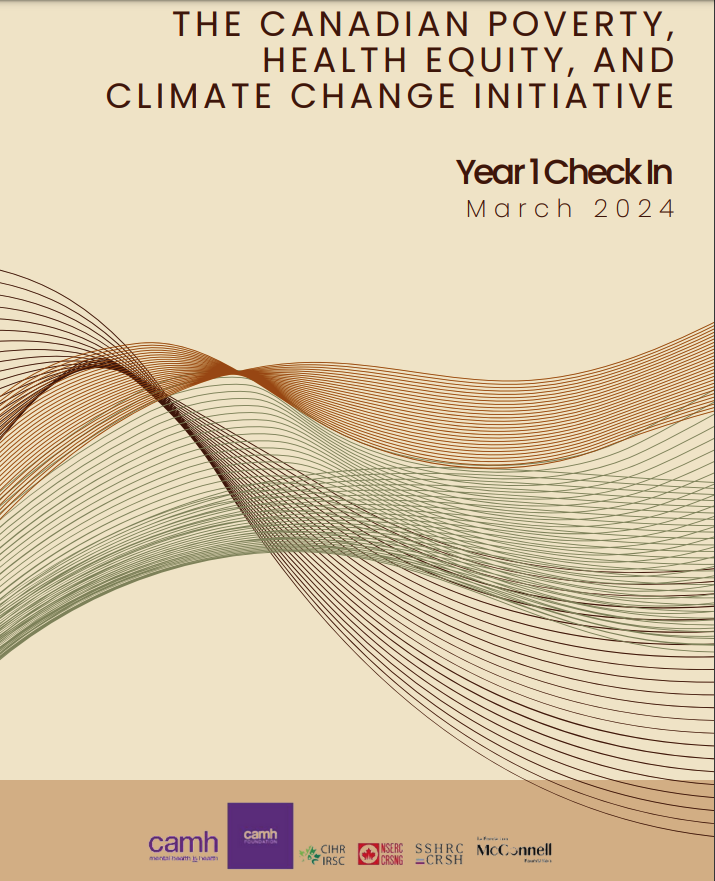McConnell Foundation & Canadian Institutes of Health Research, 2024
Author(s): Sean A. Kidd, Mariya Bezgrebelna, Leanne Lacap, Yaa S. A. Amoah, Jolly Noor & Mariam Farooq

In the broadest sense the information that we have gathered in our first year
has validated the ‘threat multiplier’ nature of climate change with respect to
people in Canada experiencing poverty. Poverty is a key factor in individual
and community vulnerability to environmental risks. There was a consensus on
this point in expert think tanks and the poverty-climate vulnerability risk
connection is very evident in the research literature. These risks revolve around,
and are compounded by several intersections, as a function of factors such as
age, gender, and access to shelter. Indigenous and racialized identities play
key roles as well, with climate change representing another facet of colonial
histories characterized by rights violations and exclusion. Specific
environmental risks addressed in the literature and in our think tanks included
heat, wild fires, air pollution, and secondary risks such as poor food security.
Our first year of work in this area has also demonstrated the significant
knowledge gaps that are present at the poverty-climate-health nexus in
Canada. With respect to the risks populations experiencing poverty face, most
of the data available is at a very general/high level and will be of limited use in
informing intervention design and assessing the effectiveness of responses.
The think tank discussions were particularly helpful in beginning to generate
areas where more specific information is needed – particularly for identity
intersections. Examples include the risks of violence and re-traumatization
faced by women in wildfire evacuations and specific implications for
Indigenous communities in this regard. Large knowledge gaps are also evident
in areas of environmental racism – for example considering older adult,
racialized asylum-seekers who face systemic barriers in accessing support
during heat waves. A large data gap theme is also that of the problem that
most of our limited information is based on current risk scenarios – with little
done that looks at projections of mounting environmental risks.



